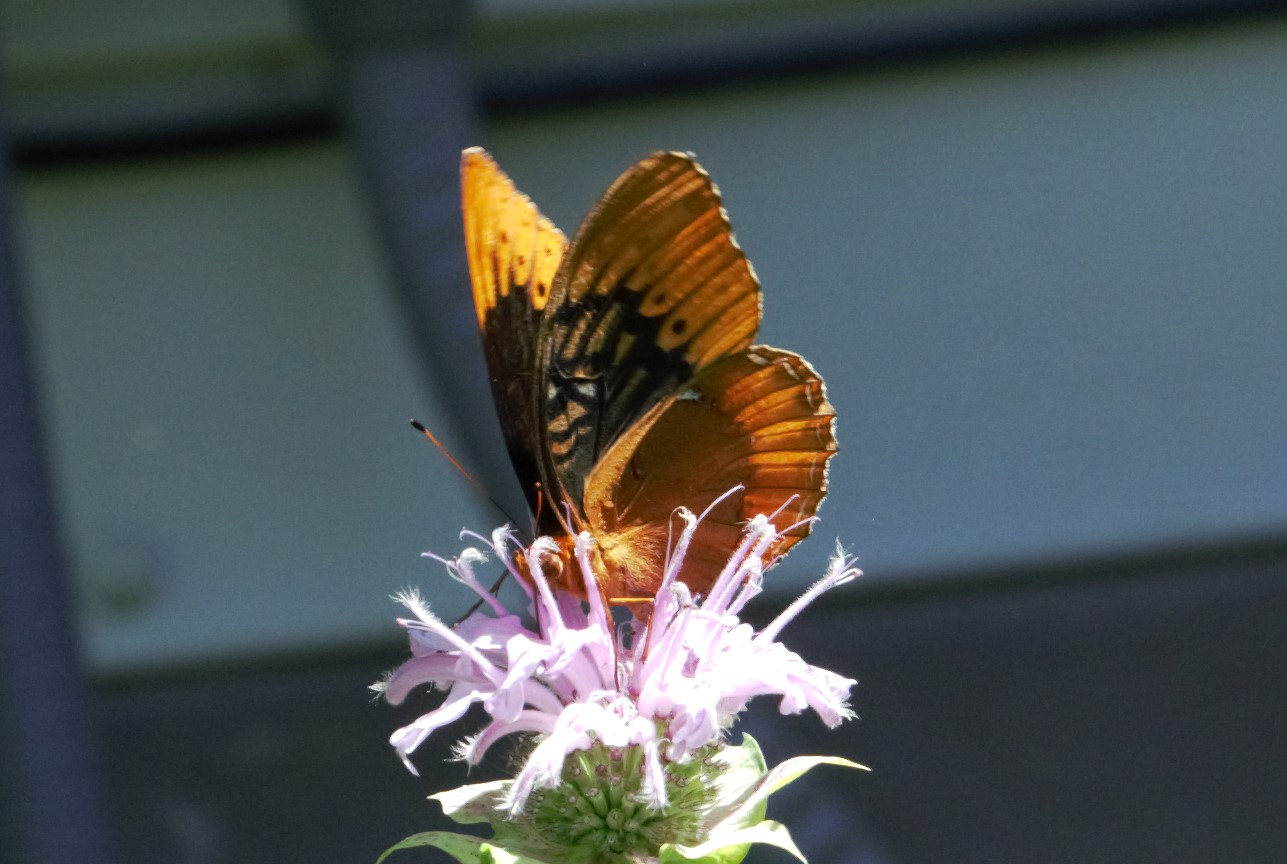Coreopsis: a great native plant for pollinators
Views: 2824
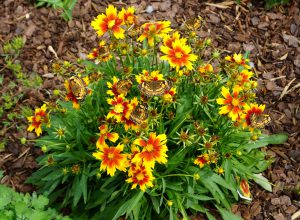
I’ve always had coreopsis in my yard, that is, until my plants were wiped out by coreopsis beetles a few years ago. I didn’t plant any last year, and I hoped without any food during a harsh year for plants and insects, maybe the beetles would die off. So I planted some again this year, and while beetles did reappear on one plant, I have two others that are blooming gloriously. I’m happy, because coreopsis is simply the most cheerful flower in my yard.
The Basics
Coreopsis is a genus of flowering plants in the family Asteraceae, commonly known as tickseed or calliopsis. There are over 100 species native to North and South America, plus many cultivars. These plants are stunning in gardens due to their vibrant, daisy-like flowers. They’re also easy to grow.
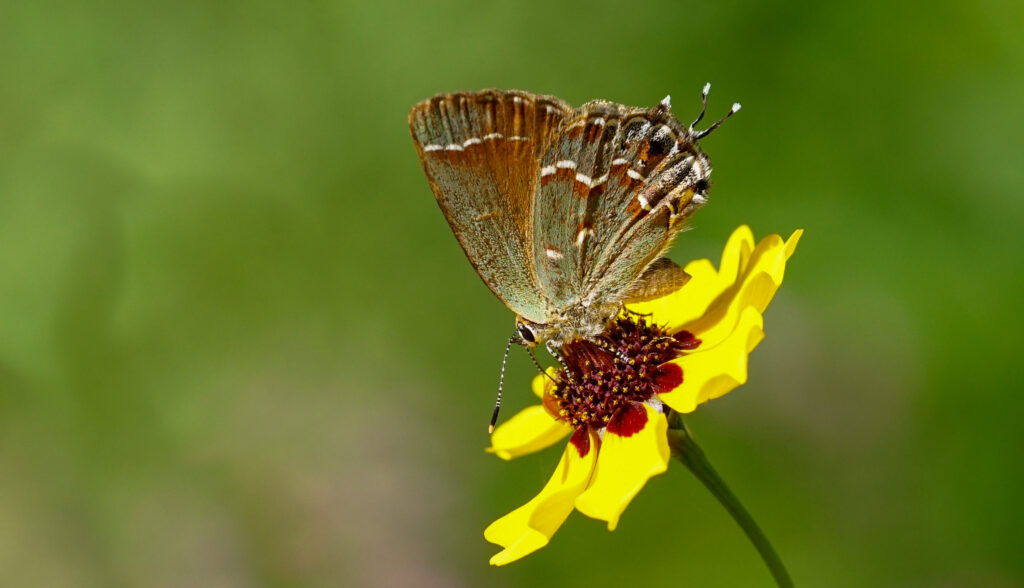
Juniper hairstreak on tickseed.
Coreopsis plants vary in size and habit, but most are herbaceous perennials or annuals. They typically have slender stems and feathery, lance-shaped leaves. The flowers are usually yellow, but some cultivars produce orange, pink, red, or white blooms. The flowers have a characteristic daisy-like shape with a prominent central disc and radiating petals. They have a long blooming period and will rebloom if deadheaded.
You can use tickseed plants in gardens, borders, and wildflower meadows. Its cheerful flowers add color and charm to the landscape. Additionally, their flowers can be used as cut flowers for floral arrangements.
Growing and Maintenance
Coreopsis plants are relatively low maintenance. They are adaptable to various growing conditions, including different soil types and light levels. Most coreopsis species prefer full sun and well-draining soil. Regular watering is crucial during the establishment phase, but they are drought-tolerant once established and can withstand hot and dry conditions.
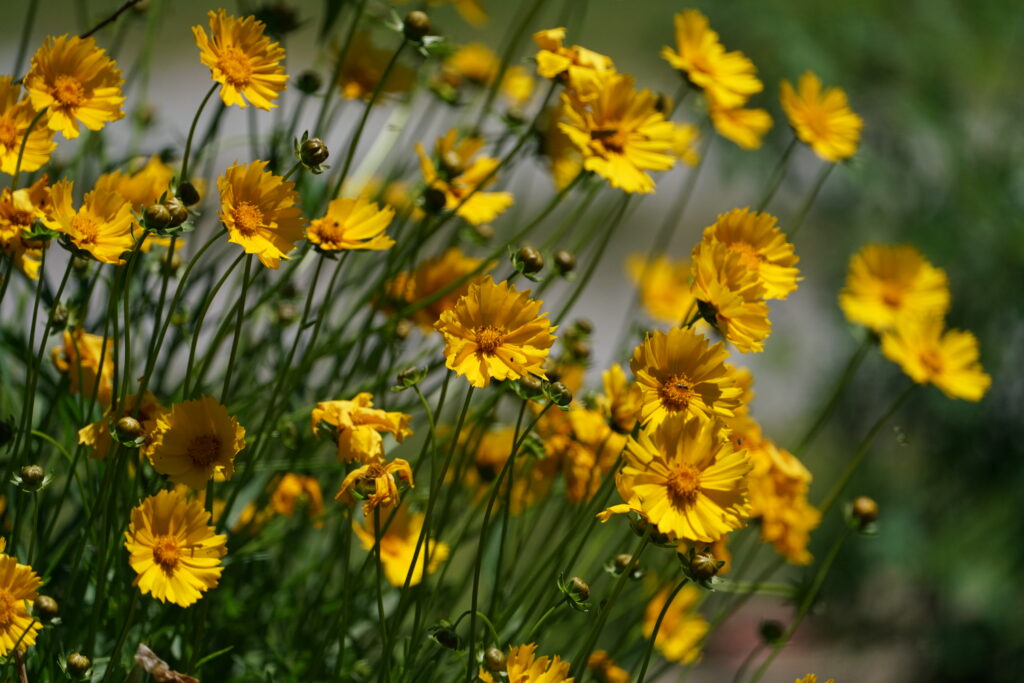
Tickseed.
Coreopsis can be propagated from seeds or by dividing mature plants. Seeds can be sown directly in the garden after the last frost or started indoors and transplanted later. I’ve had varieties that reseeded aggressively without assistance, while others never spread. Division should be done in early spring or fall, ensuring each division has roots and shoots for successful establishment.
The hardiness of coreopsis species varies, but many are tolerant of cold temperatures. Some species are perennial in colder climates, while others may be treated as annuals or semi-perennials.
Varieties
There are numerous coreopsis cultivars available, offering a wide range of colors, sizes, and growth habits. Some popular varieties include:
- Coreopsis grandiflora (Large-flowered tickseed)
- Coreopsis verticillata (Threadleaf coreopsis)
- Coreopsis lanceolata (Lanceleaf coreopsis)
- Coreopsis tinctoria (Plains coreopsis)
Each variety has its own unique characteristics and requirements.
Wildlife Attraction
Coreopsis flowers provide pollen and nectar to bees, butterflies, and hummingbirds. In my yard, crescent and checkerspot butterflies are always on them. They’re also popular with native bees. Their bright colors and nectar-rich blooms make them a valuable addition to pollinator gardens and wildlife habitats. Coreopsis is a host plant for the larvae of certain butterfly species. Varieties may host silvery checkerspots, which explains their popularity with these particular butterflies in my own yard.
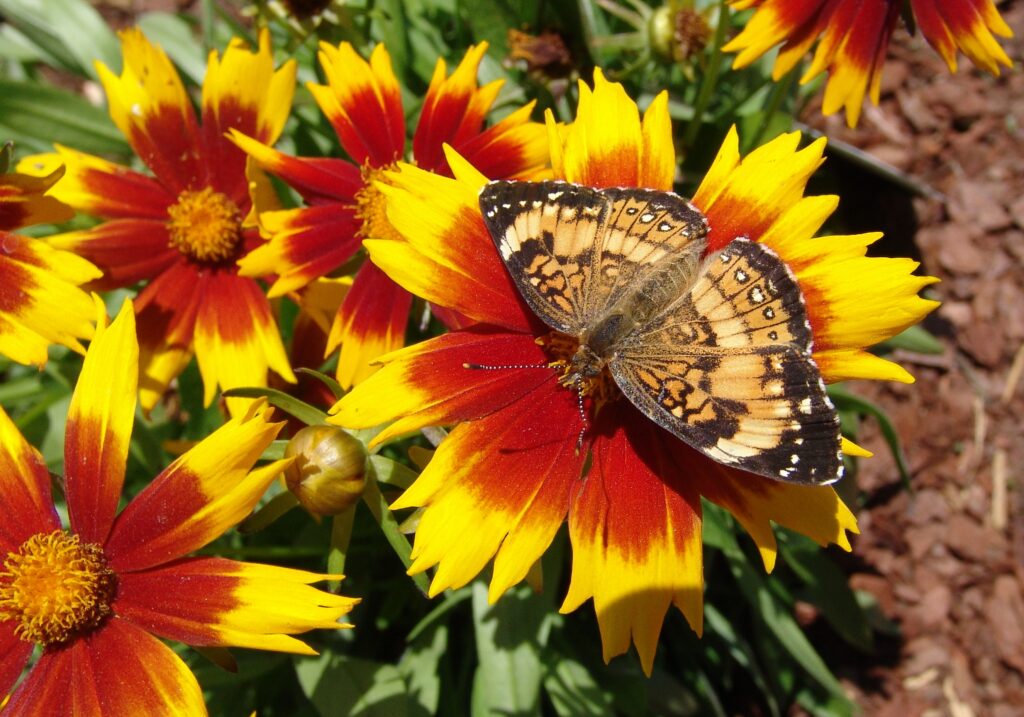
Silvery checkerspot on a tickseed cultivar.
Meet Leslie Miller
Leslie Ann Miller shares 3.5 acres in rural Oklahoma with birds, butterflies and wide variety of animals. She is currently transforming her yard with plantings…
Leslie's Recent Posts
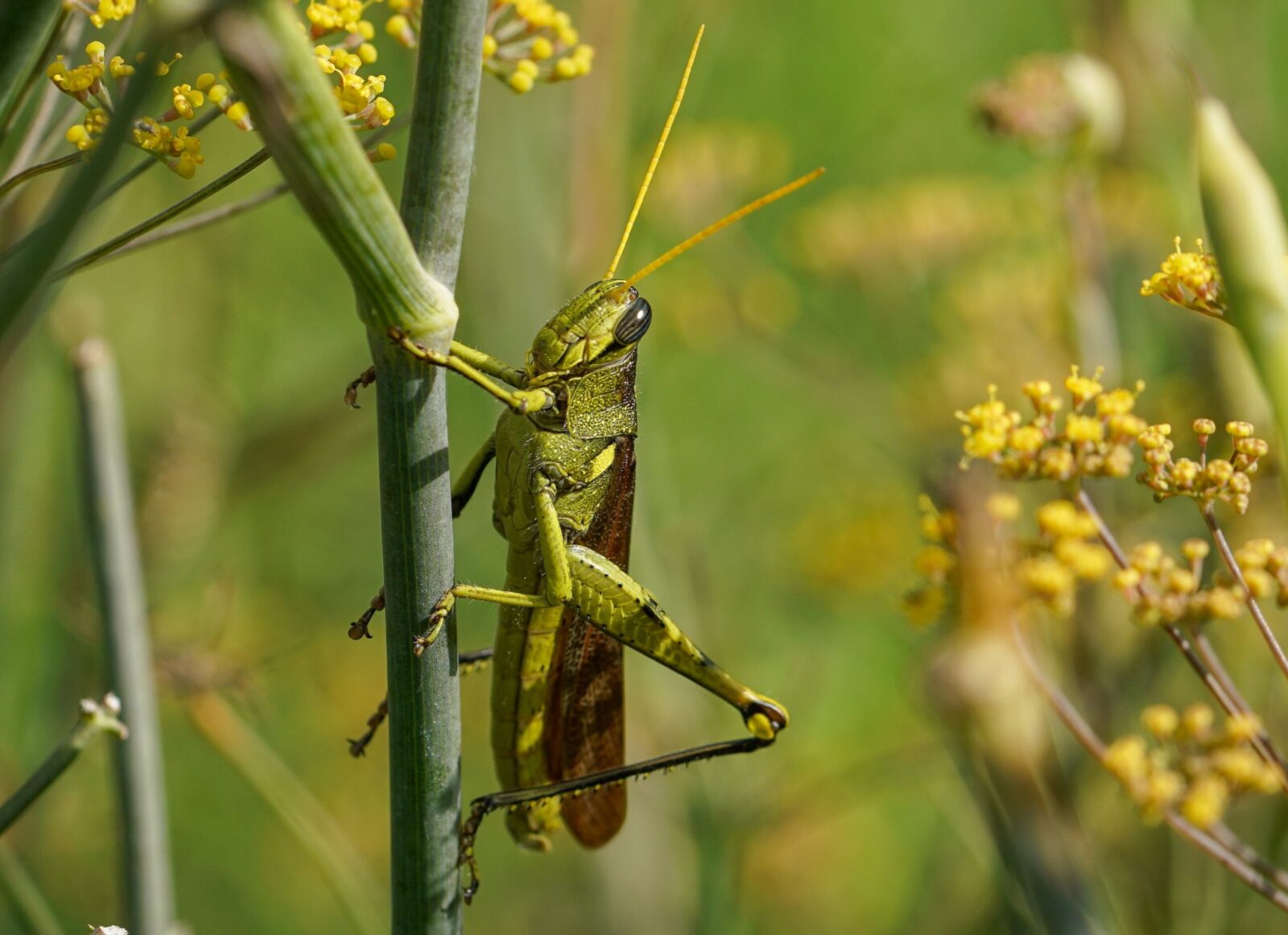
Grasshoppers and how to control them
